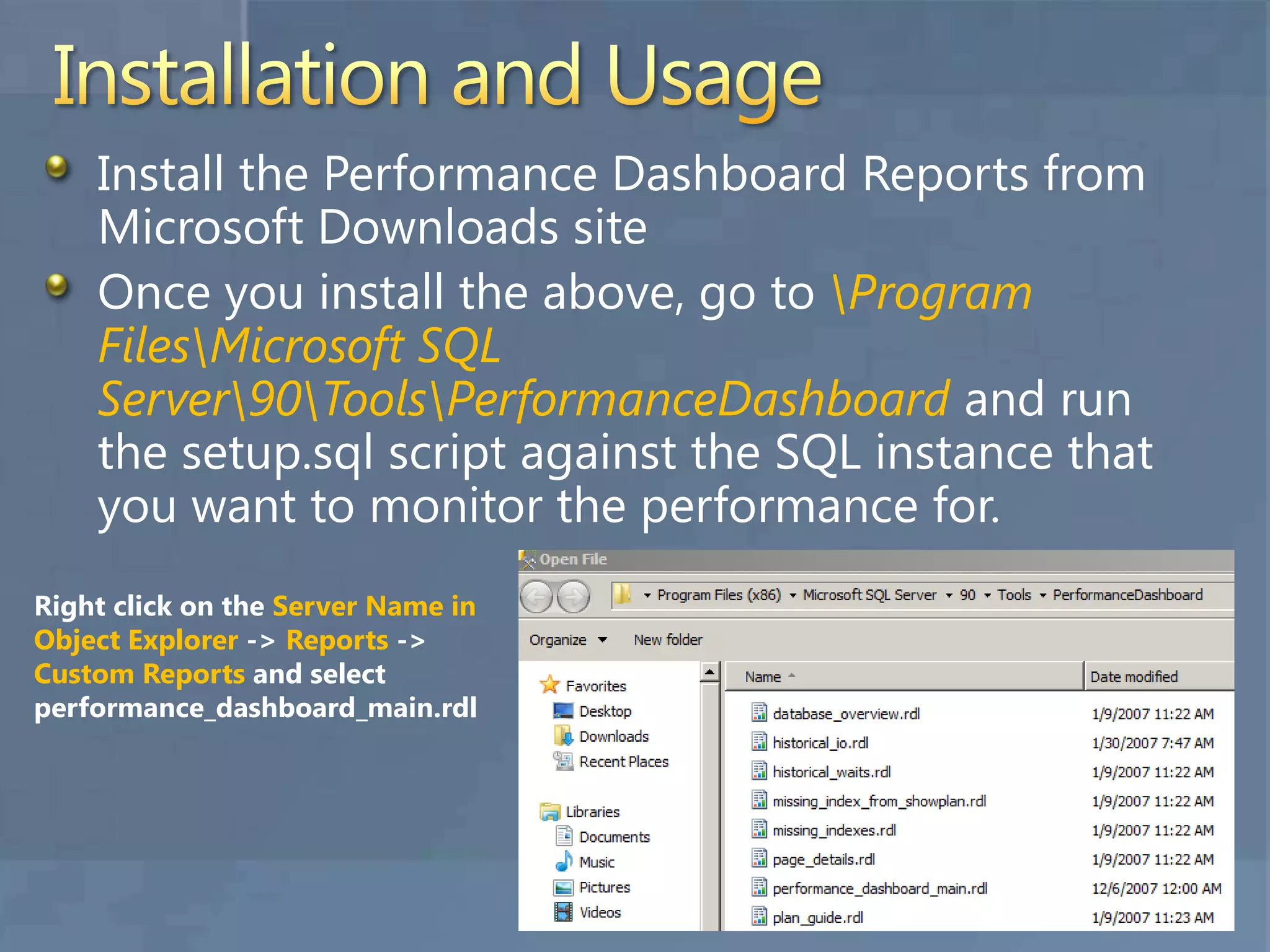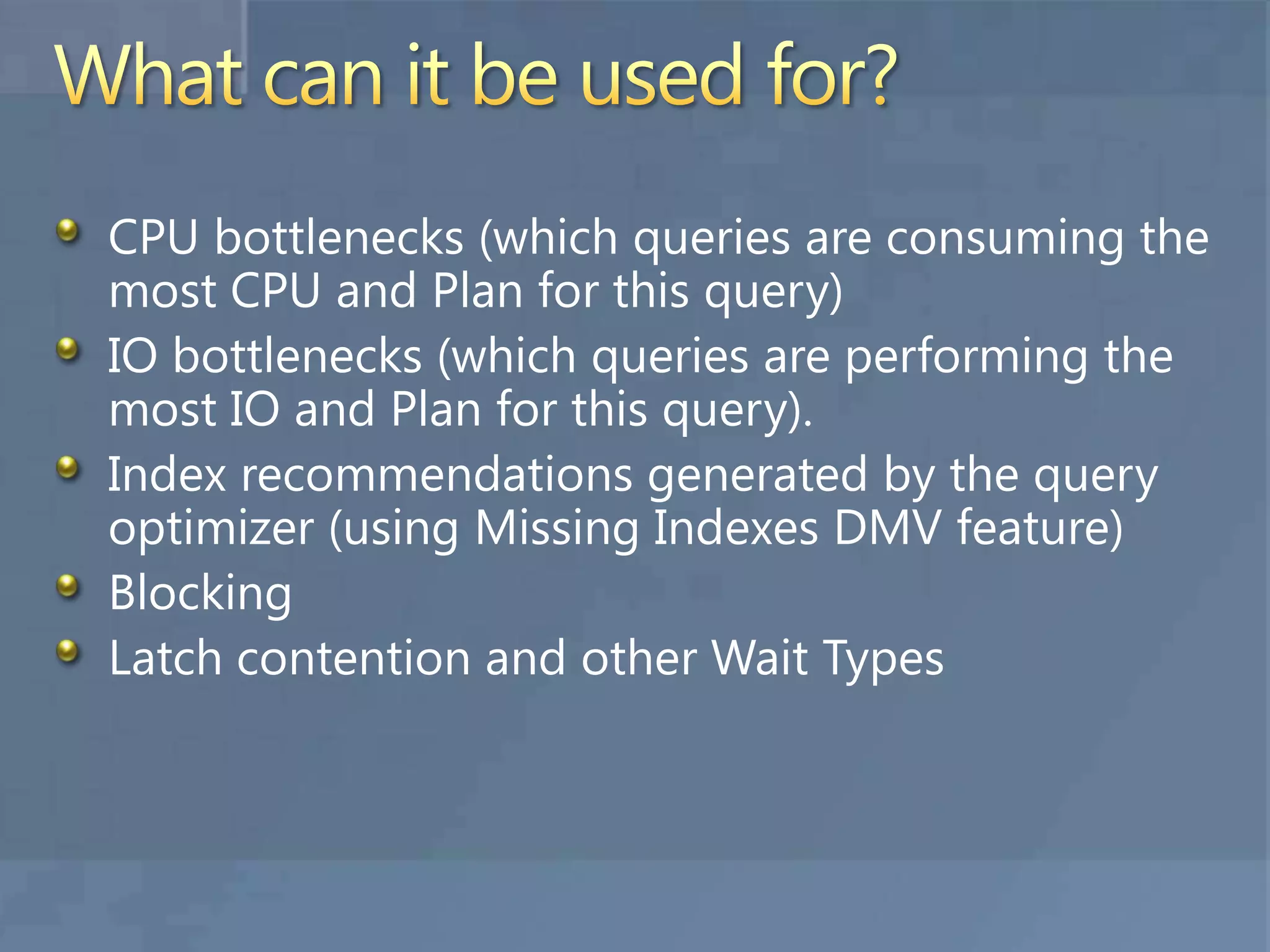The Performance Dashboard is a set of reports deployed using custom reports in SQL Server Management Studio that help identify common performance issues like blocking, high CPU usage, and I/O bottlenecks. It is installed from Microsoft downloads and configured by running a script on the target SQL instance. The dashboard provides information on CPU usage, blocking, waits, and index recommendations to help troubleshoot bottlenecks without executing queries directly.








